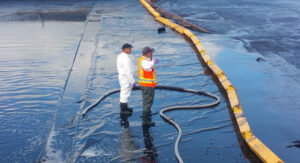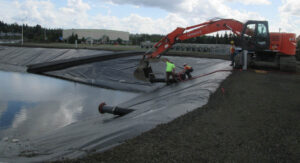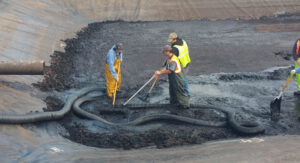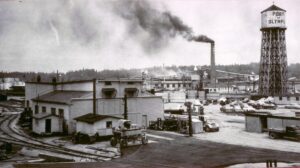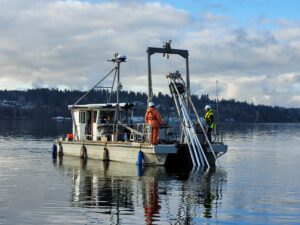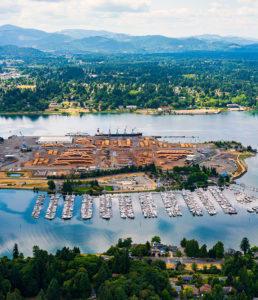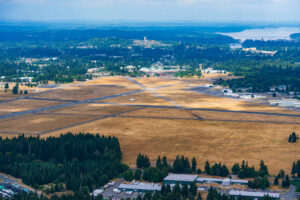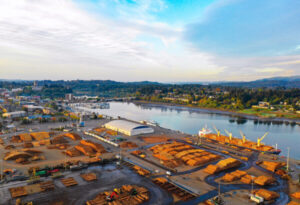Port of Olympia Blog
Stormwater management at the Port of Olympia isn’t handled by one system—it’s a coordinated effort involving infrastructure, technology, and a trained team of people. Our operations include managing our 66-acre marine terminal, which primarily consists of importing and exporting logs. These activities can create debris and other pollutants on the ground. When it rains, stormwater can pick up these materials and discharge them into Budd Inlet.
That’s why we go beyond the requirements of our Industrial Stormwater Permit, part of the Clean Water Act’s framework for reducing pollution from industrial sites like ours. From the moment rain hits the ground to the final point of discharge, every step is carefully managed to protect public health and safety and to give marine life a clean, healthy habitat. Through proactive systems, new technology and staff oversight, the Port ensures that stormwater discharges remain clean, aligning with our goals for compliance, safety, and the environmental stewardship of Budd Inlet and our marine ecosystem.
Meeting and Exceeding Management Benchmarks
Stormwater management begins when rainfall first enters Port property. Our industrial marine terminal space is diligently maintained through regular cleaning and maintenance practices and coordination with our industrial tenants, which include routine inspections and daily street sweepings. Our efforts were recognized at our annual Industrial Stormwater Inspection, where Washington State Department of Ecology noted:
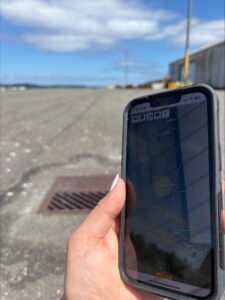
“…the tarmac appeared pristine. Port personnel detailed extensive source control Best Management Practices (BMPs), including rigorous sweeping and removal of solids from asphalt by dedicated professionals.”
Integrating Technology and Streamlining Processes
Despite our success in maintaining this level of care at our marine terminal, we are always looking at how we can streamline processes and be more efficient. That’s why we have introduced Geographic Infrastructure System mapping (GIS) this year to help staff conduct inspections, identify infrastructure and make sure our stormwater system is kept clean and operating at peak performance.
This switch has allowed staff to work with our maps in real time and add data directly. No more depending on old paper maps, we can now handle real-time digital tools that capture every step of our work.
24-7 Monitoring
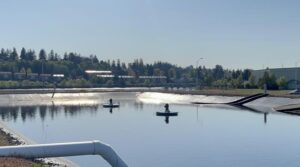
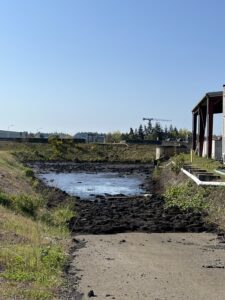
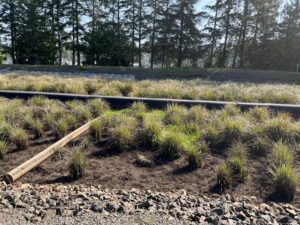 Once stormwater enters our marine terminal system, treatment begins. The Port operates a one-of-a-kind stormwater chemical treatment facility that utilizes a process called the Fenton Reaction, which breaks down organic pollutants and separates them from stormwater. After this step, we run our treated water through several rounds of additional sand filters and a bio-infiltration pond before it discharges to Budd Inlet. This system runs around the clock when it rains—something that happens often in Washington—and is closely monitored and maintained day and night by trained professionals.
Once stormwater enters our marine terminal system, treatment begins. The Port operates a one-of-a-kind stormwater chemical treatment facility that utilizes a process called the Fenton Reaction, which breaks down organic pollutants and separates them from stormwater. After this step, we run our treated water through several rounds of additional sand filters and a bio-infiltration pond before it discharges to Budd Inlet. This system runs around the clock when it rains—something that happens often in Washington—and is closely monitored and maintained day and night by trained professionals.
Thanks to these efforts, the Port has consistently met water quality benchmarks for 26 straight quarters. We report our sampling results quarterly to Department of Ecology, which are available to the public by request to maintain transparency in all stormwater data. From the ground up, our integrated stormwater strategy supports compliance, environmental care, and long-term sustainability.
Sign Up for Environmental Updates
If you’d like to receive this blog series to your inbox, sign up for our Environmental Blog Series email. Some of the topics planned for upcoming issues include: salmon and shellfish management practices, renewable energy programs and topics related to climate change and sea level rise.

